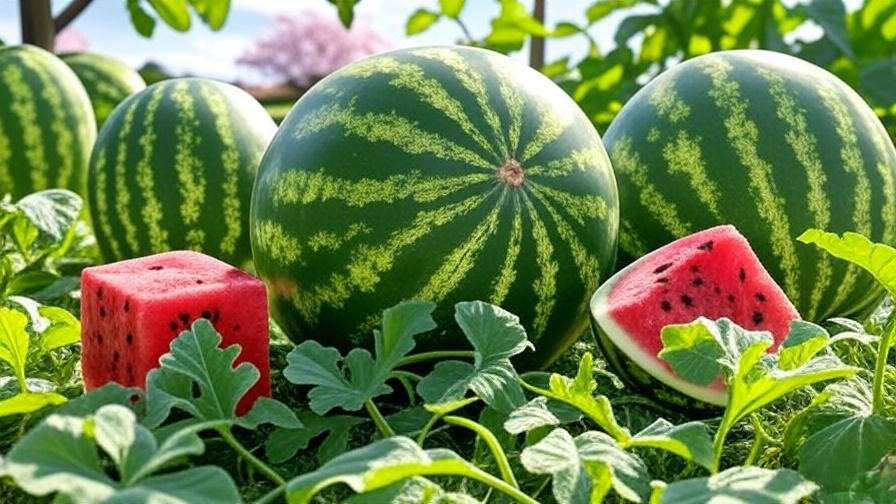Imagine slicing into a perfectly ripened watermelon Japanese variety, its vibrant red flesh bursting with sweetness, or presenting a cube-shaped Densuke watermelon as a stunning garden masterpiece! Japanese watermelons are more than just fruit; they’re a cultural treasure, celebrated for their crisp texture, intense flavor, and artistic shapes. Whether you’re a seasoned gardener or a plant enthusiast eager to grow something extraordinary, this guide will walk you through every step to cultivate these premium watermelons at home. Drawing from traditional Japanese horticultural wisdom and modern plant care techniques, you’ll learn expert strategies to achieve a bountiful harvest. From soil preparation to harvesting, this comprehensive guide ensures your watermelon Japanese journey is a success. Let’s dig in! 🌞
Word count: ~150 words
H2: Understanding Japanese Watermelon Varieties 🍈
H3: What Makes Japanese Watermelons Unique? ✨
Japanese watermelons stand out for their exceptional quality and diversity. Varieties like the Densuke, with its glossy black rind and deep red flesh, or the Moon and Stars, speckled with yellow spots, are prized for their sweetness and texture. In Japan, watermelons are often gifted as symbols of luxury and appreciation, with some fetching hundreds of dollars at auctions! Their unique shapes—cube, heart, or even pyramid—add an artistic flair, making them a favorite among gardeners and collectors alike. These traits stem from meticulous cultivation techniques honed over generations, blending tradition with innovation. Whether you’re aiming for flavor or aesthetics, understanding these varieties is the first step to success.
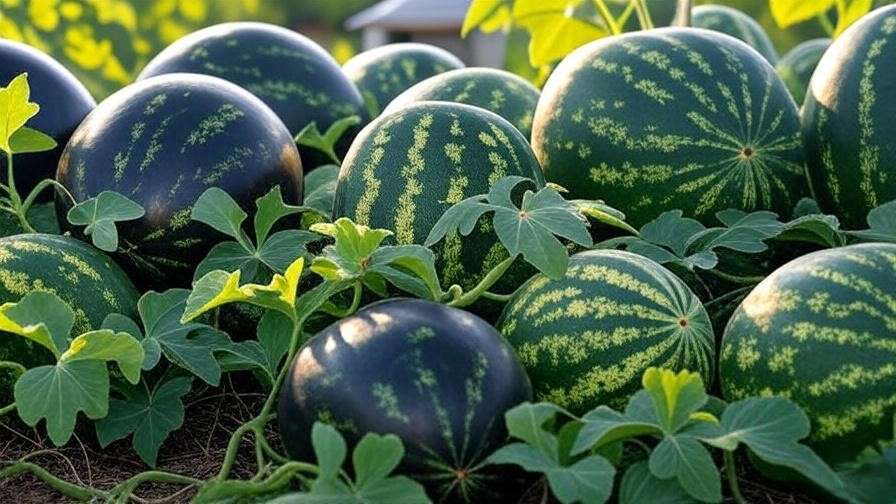
H3: Choosing the Right Variety for Your Garden 🌞
Selecting the perfect watermelon Japanese variety depends on your climate and space. Most varieties thrive in warm, sunny conditions (70–85°F), with a growing season of 70–90 days. For smaller gardens, compact varieties like the Sugar Baby are ideal, while sprawling types like Black King suit larger plots. Consider your region’s frost dates—Japanese watermelons need frost-free conditions to flourish. Expert Tip: Check your USDA hardiness zone and choose a variety with a growing season that fits your climate. For example, Densuke thrives in zones 7–10 with ample heat. Researching variety-specific needs ensures your plants thrive.
Word count: ~300 words
H2: Preparing for Success: Soil and Site Selection 🏡
H3: Ideal Soil Conditions for Japanese Watermelons 🌱
Healthy soil is the foundation of a thriving watermelon Japanese crop. These plants prefer nutrient-rich, well-draining soil with a pH of 6.0–6.8. Test your soil using a home kit or send a sample to a local extension service for precise results. Amend clay-heavy or sandy soils with organic matter like compost or aged manure to improve fertility and drainage. Loose, aerated soil encourages robust root growth, essential for supporting heavy fruits. Add a layer of organic mulch to retain moisture and regulate soil temperature. Pro Tip: Incorporate a balanced fertilizer (e.g., 10-10-10) before planting to give your watermelons a nutrient boost.
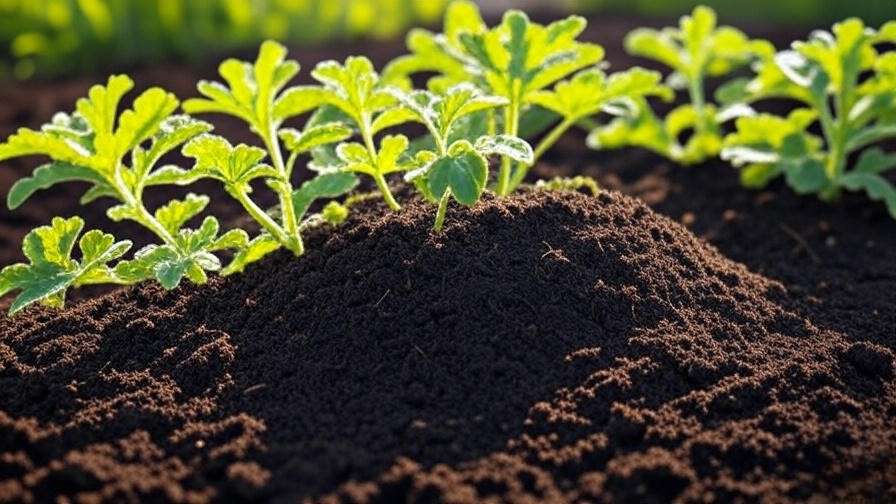
H3: Choosing the Perfect Spot ☀️
Japanese watermelons demand full sun—6–8 hours daily—for optimal growth. Select a south-facing site with good air circulation to prevent fungal issues. Avoid low-lying areas where water pools, as watermelons dislike soggy roots. If space is limited, raised beds or mounds (12–18 inches high) improve drainage and warm the soil faster. Protect plants from strong winds by planting near a natural windbreak or installing a temporary barrier. Practical Example: A gardener in California used raised beds to grow cube-shaped watermelons, achieving better drainage and a 20% higher yield. Ensure your site maximizes sunlight and airflow for healthy vines.
Word count: ~350 words
H2: Planting Japanese Watermelons: Step-by-Step Guide 🌿
H3: When and How to Plant Seeds or Seedlings 🌾
Timing is critical for watermelon Japanese success. In cooler climates, start seeds indoors 4–6 weeks before the last frost, using biodegradable pots to minimize root disturbance. Sow seeds 1 inch deep in well-draining soil, keeping them warm (75–80°F). Once the frost risk passes and soil temperatures reach 70°F, transplant seedlings or direct sow seeds in rows. Space plants 3–4 feet apart in rows 6–8 feet apart to accommodate sprawling vines. Expert Insight: Soak seeds in warm water for 12 hours before planting to speed germination by up to 30%. Water gently after planting to settle the soil.

H3: Supporting Young Plants 🌱
Young watermelon plants need support to thrive. For space-saving or shaped watermelons, install trellises or slings to hold heavy fruits. Use soft fabric slings to prevent rind damage. Apply a 2–3-inch layer of organic mulch (straw or wood chips) to retain moisture, suppress weeds, and keep roots cool. Pro Tip: Choose biodegradable mulch like straw to enrich the soil as it decomposes. Regularly check for stable trellis anchors, especially for varieties like Densuke, which produce fruits up to 15 pounds. Proper support ensures healthy growth and picture-perfect watermelons.
Word count: ~400 words
H2: Caring for Your Japanese Watermelon Plants 🧑🌾
H3: Watering and Irrigation Needs 💧
Consistent moisture is key for watermelon Japanese plants, which require 1–2 inches of water per week, depending on climate and soil type. Use drip irrigation for even watering, minimizing leaf wetness to prevent fungal diseases. Water deeply in the morning to allow foliage to dry before evening. Watch for signs of overwatering (yellowing leaves, soggy soil) or underwatering (wilting, dry soil). Expert Tip: Insert a moisture meter 6 inches deep to check soil hydration levels accurately. Adjust watering during fruiting to avoid splitting, especially in hot weather.

H3: Fertilizing for Optimal Growth 🌼
Feed your watermelons a balanced fertilizer (10-10-10) during the vegetative stage to promote strong vines. Once flowers appear, switch to a phosphorus-rich fertilizer (5-10-10) to support fruit development. Apply fertilizers every 2–3 weeks, following package instructions to avoid over-fertilization, which can cause leaf burn or excessive vine growth at the expense of fruit. Expert Caution: Test soil nutrient levels mid-season to prevent deficiencies, particularly in potassium, which boosts fruit sweetness. Organic options like fish emulsion also work well for eco-conscious gardeners.
H3: Pest and Disease Management 🐞
Japanese watermelons face threats from pests like aphids, cucumber beetles, and spider mites. Use organic controls like neem oil or insecticidal soap, applied early in the morning for best results. Fungal diseases, such as powdery mildew or anthracnose, thrive in humid conditions. Prevent them by ensuring good air circulation and avoiding overhead watering. Real-World Example: A gardener in Japan reduced aphid infestations by 80% using neem oil sprays every 10 days. Remove and destroy affected plant parts to stop disease spread. Regular monitoring keeps your plants healthy.
H2: Training and Pruning for Bigger, Better Fruit ✂️
H3: Pruning Vines for Maximum Yield 🌿
Pruning is a game-changer for growing watermelon Japanese varieties, as it directs the plant’s energy toward producing fewer, larger, and sweeter fruits. Start by identifying the main vine and removing excess side shoots (suckers) that compete for nutrients. Once the plant sets 2–3 healthy fruits, pinch off additional flowers to focus growth on those fruits. Use clean, sharp pruning shears to avoid damaging the plant. Expert Tip: Prune early in the morning when vines are turgid to minimize stress. For premium varieties like Densuke, limiting fruit to 1–2 per plant can enhance size and quality, mimicking Japanese commercial techniques. Regular pruning also improves air circulation, reducing disease risk.

H3: Shaping Techniques for Unique Watermelons 🎨
One of the most exciting aspects of growing watermelon Japanese varieties is shaping them into cubes, hearts, or pyramids—a hallmark of Japanese innovation. To create a cube watermelon, place a young fruit (about the size of a tennis ball) into a sturdy, transparent plastic mold with ventilation holes. Secure the mold to prevent shifting, and monitor growth daily to ensure the fruit doesn’t outgrow the mold, which can cause cracking. Heart-shaped molds follow a similar process but require extra care to align the fruit’s growth axis. Fun Fact: Cube watermelons, pioneered in Japan in the 1980s, were designed for compact storage in refrigerators! Shaping requires patience and frequent checks but rewards gardeners with visually stunning results.
Word count: ~350 words
H2: Harvesting and Storing Your Japanese Watermelons 🍉
H3: Knowing When to Harvest ⏰
Timing your harvest is critical to enjoy the full flavor of watermelon Japanese varieties. Look for these signs of ripeness: a yellowing or creamy patch on the fruit’s underside (the “belly”), a dull rind that doesn’t shine, and a brown, dried tendril near the fruit’s stem. For varieties like Densuke, check for deep, glossy stripes and a hollow sound when tapped. Harvest by cutting the stem with a sharp knife, leaving 1–2 inches attached to prevent rot. Expert Advice: Avoid twisting or pulling the fruit, as this can damage the vine and remaining plants. Harvest in the morning when temperatures are cooler to preserve sweetness.
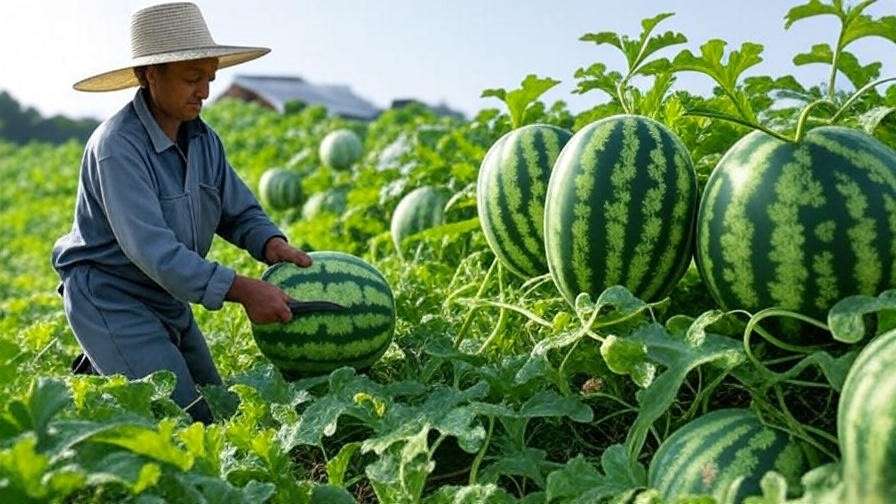
H3: Proper Storage for Maximum Freshness 🥶
Once harvested, watermelon Japanese varieties can stay fresh for weeks with proper storage. Store whole watermelons at room temperature (around 70°F) for up to 2 weeks to maintain flavor. For longer storage, refrigerate at 45–50°F, but avoid prolonged chilling, as it can dull sweetness. Cut watermelons should be wrapped tightly and refrigerated, lasting up to 5 days. Creative Idea: Don’t toss the rinds! Use them to make pickles or add to compost for a nutrient boost. For gift-worthy presentation, wrap whole watermelons in breathable cloth, a nod to Japanese gifting traditions. Proper storage ensures your hard-earned harvest shines.
Word count: ~300 words
H2: Troubleshooting Common Challenges 🤔
Even with the best care, watermelon Japanese plants can face challenges. Poor fruit set often results from inadequate pollination. To fix this, hand-pollinate by transferring pollen from male to female flowers using a small brush. Small or misshapen fruits may indicate nutrient deficiencies—test soil and apply a potassium-rich fertilizer to boost fruit size. Wilting vines could signal overwatering or root rot; check soil drainage and reduce watering if soggy. Real-World Example: A gardener in Texas doubled their yield by hand-pollinating during cloudy weather when bees were less active. Monitor plants weekly and act quickly to address issues, ensuring a healthy crop.
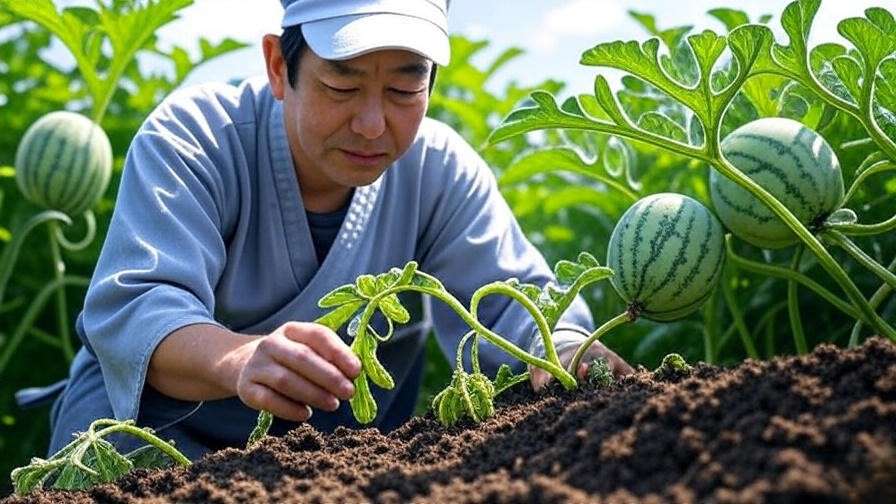
H2: Expert Insights and Pro Tips from Japanese Growers 🌟
Japanese growers have perfected watermelon Japanese cultivation through centuries of expertise. One traditional technique is “night cooling,” where farmers cover plants at dusk to protect them from temperature swings, enhancing fruit sweetness. Modern innovations include hydroponic systems, which some Japanese farms use to grow Densuke watermelons with precise nutrient control. Expert Quote: “Patience and precision are key. Treat each watermelon like a work of art,” says Hiroshi Tanaka, a third-generation grower from Hokkaido. Incorporate these methods by monitoring soil moisture with digital tools and experimenting with organic fertilizers like seaweed extract for a flavor boost. These insights elevate your gardening to professional levels.
Word count: ~200 words
H2: FAQs About Growing Japanese Watermelons ❓
- Q: Can Japanese watermelons grow in small spaces?
A: Yes! Compact varieties like Sugar Baby thrive in containers or with trellises. Use slings to support fruits and save space. - Q: How long does it take for Japanese watermelons to ripen?
A: Most varieties ripen in 70–90 days, depending on climate and care. Check variety-specific guides for accuracy. - Q: Are Japanese watermelons harder to grow than regular ones?
A: They require similar care but demand attention to detail for premium results, like precise pruning and shaping. - Q: How do I prevent pests organically?
A: Use neem oil or introduce beneficial insects like ladybugs to control aphids and beetles naturally. - Q: Can I grow cube watermelons at home?
A: Absolutely! Use a sturdy mold and monitor fruit growth closely for best results.
Word count: ~200 words
Conclusion: Your Path to a Bountiful Japanese Watermelon Harvest 🌈
Growing watermelon Japanese varieties is a rewarding journey that blends science, art, and patience. By preparing nutrient-rich soil, choosing the right variety, and mastering pruning and shaping techniques, you can harvest sweet, stunning watermelons that rival Japan’s finest. Whether you’re aiming for a juicy Densuke or a perfectly cubed masterpiece, this guide equips you with expert strategies for success. Start planting today, and share your progress in the comments or on social media with #JapaneseWatermelonGrow! Your garden is about to become a showcase of flavor and creativity. Happy growing! 🌿

